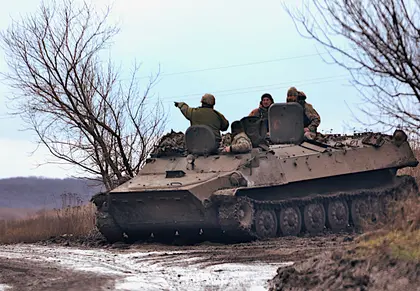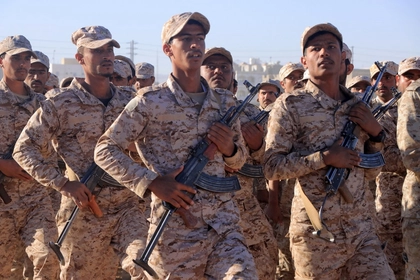In Chasiv Yar, a critical logistics hub in the Donbas, incoming Russian howitzer shells detonated intermittently, but Ukrainian gunners firing mortars and howitzers were outshooting Kremlin artillery by at least five to one.
Four kilometers west of the embattled city of Bakhmut, Chasiv Yar is a nexus for two key supply roads. Both are under Russian long-range fire and are being used by the Armed Forces of Ukraine (AFU) to carry ammunition, food, fuel and reinforcements to Ukrainian defenses in one of the hottest sectors of the war.
JOIN US ON TELEGRAM
Follow our coverage of the war on the @Kyivpost_official.
Although the roads can be hit by Russian artillery, soldiers and civilians said, the supplies are still getting through. On March 11 and 12, a Kyiv Post reporting team drove routes between Chasiv Yar, Slovyansk and Kostiantynivka, and found them passable to a four-wheel drive vehicle and in regular use by mostly military traffic in both directions.
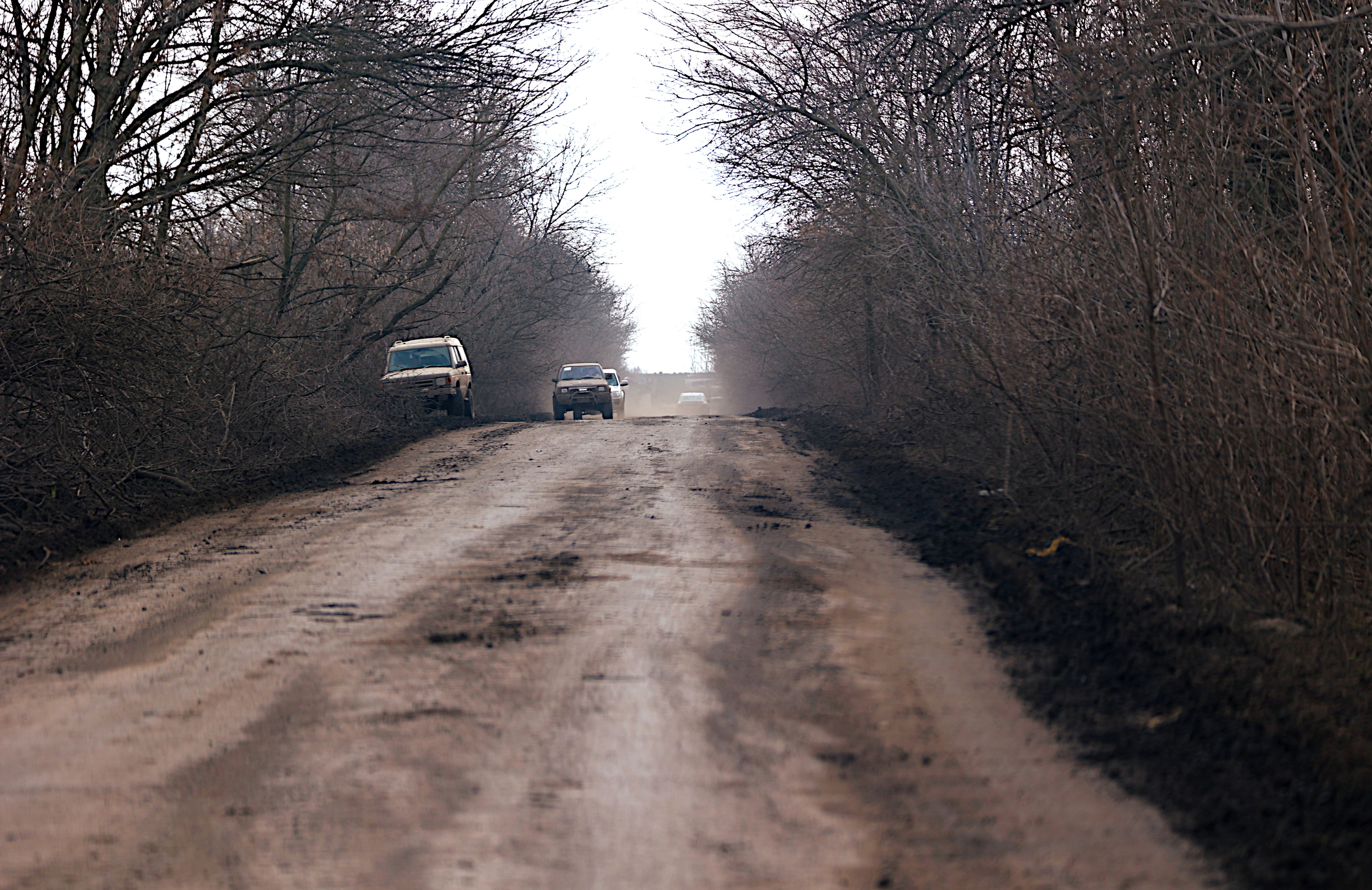 Ukraine Armed Forces supply road, vicinity Chasiv Yar village, Bakhmut sector. During a Mar. 11 drive a Kyiv Post reporting team found the road passable. Soldiers said it comes under Russian artillery fire sometimes but supplies get through. Photo by Phillip Ittner
Ukraine Armed Forces supply road, vicinity Chasiv Yar village, Bakhmut sector. During a Mar. 11 drive a Kyiv Post reporting team found the road passable. Soldiers said it comes under Russian artillery fire sometimes but supplies get through. Photo by Phillip Ittner
AFU troops encountered in Chasiv Yar, and elsewhere in sector, appeared to be well fed, in good spirits, and in some cases even apologetic for a standing AFU order banning quoted, official conversations between Ukrainian military service members and the media. Several offered hot drinks, fresh fruit, energy drinks, or use of building basements, if needed, as a bomb shelter.

UN Chief Slams Landmine Threat Days After US Decision to Supply Ukraine
Many soldiers wore identification patches from regular combat brigades with well-established fighting reputations. They appeared to be rested, clean and well-armed, both with personal weapons and combat vehicles. The Kyiv Post team observed a mix of NATO-standard and Soviet-era equipment.
In informal conversations more than ten AFU officers, non-commissioned officers and enlisted soldiers in six villages near the frontline said their formations are holding against continuing Russian infantry attacks in and around Bakhmut. The Russian assaults lack heavy weapons of their own, particularly infantry fighting vehicles, tanks, and heavy artillery, they said.
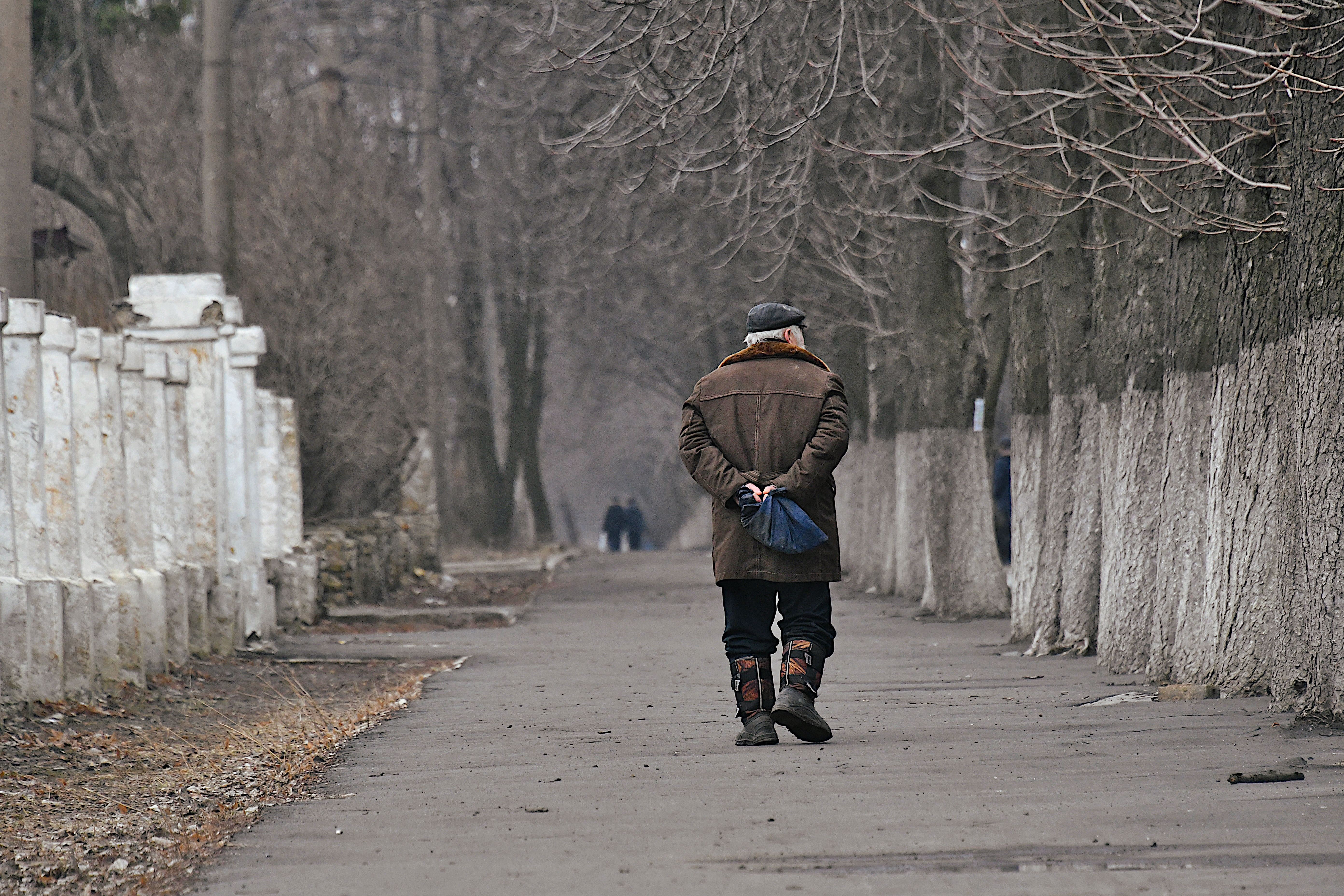 Resident of Chasiv Yar walks home on Mar. 11. He told a Kyiv Post reporting team he did not plan to evacuate his home because he believes the Ukrainian army will stop Russian forces some six kilometers to the east. Photo by Phillip Ittner.
Resident of Chasiv Yar walks home on Mar. 11. He told a Kyiv Post reporting team he did not plan to evacuate his home because he believes the Ukrainian army will stop Russian forces some six kilometers to the east. Photo by Phillip Ittner.
At one location, well to the west of Bakhmut, Kyiv Post watched an AFU long-range 2S9 Pion gun set up to the side of the road and launch heavy, 203mm shells eastward. No Russian counter-battery fire was observed. Elsewhere in sector, twice, the Kyiv Post reporting team heard Ukrainian guns and mortars firing a round every fifteen seconds, for more than five minutes, without any Russian response.
“We absolutely will stand, we will fight them every step,” an AFU lieutenant from one of Ukraine’s western regions said. A sergeant commanding a Cold War-era NATO-standard infantry fighting vehicle mounted with a US-made .50 caliber machine gun told Kyiv Post: “As long as we have ammunition, we will stop them (Russian attacks).”
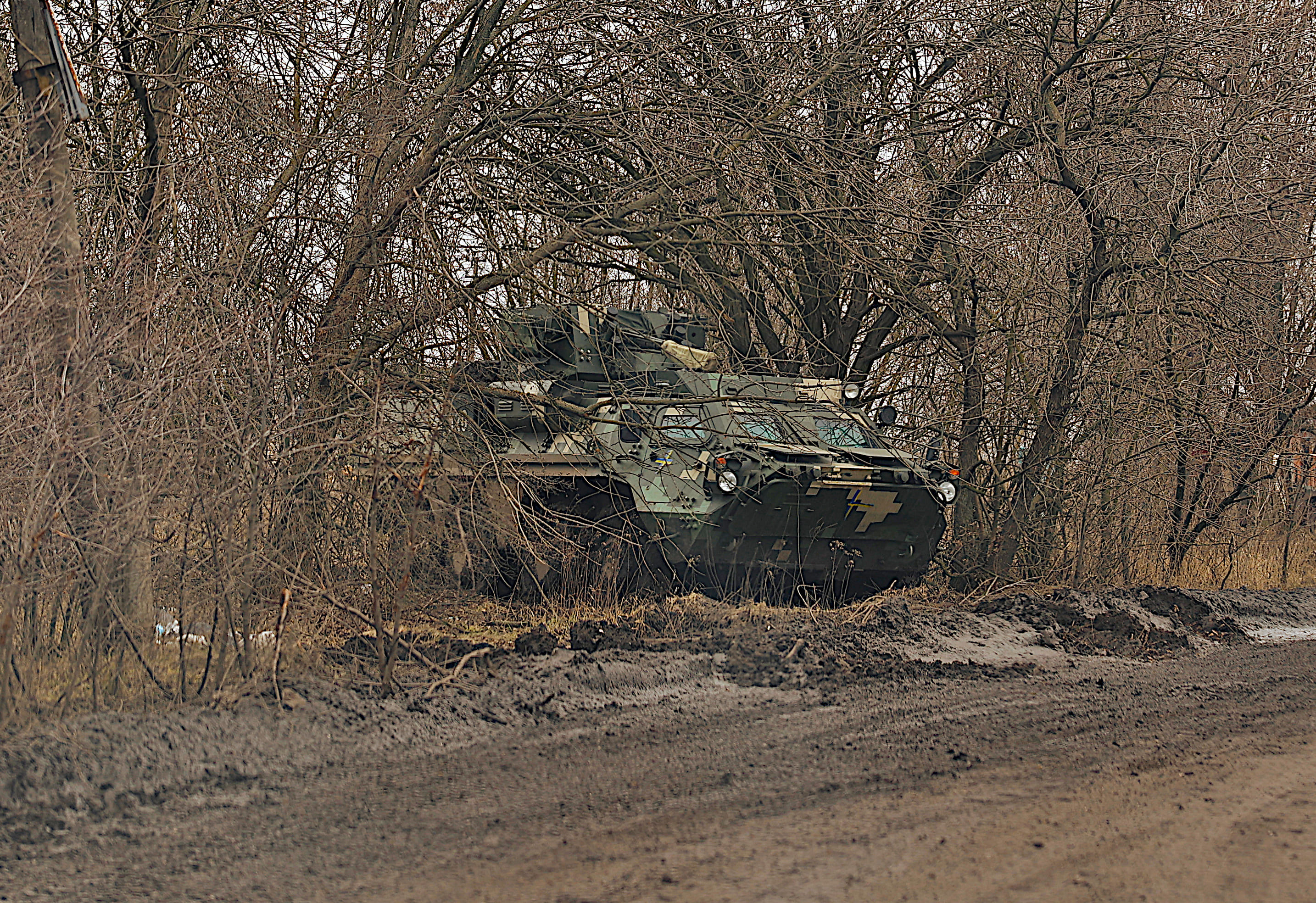 Well-concealed Ukrainian army BTR-3 armored personnel carrier as seen from road in Bakhmut sector, Mar. 11. Photo by Phillip Ittner.
Well-concealed Ukrainian army BTR-3 armored personnel carrier as seen from road in Bakhmut sector, Mar. 11. Photo by Phillip Ittner.
All soldiers relating frontline experience said that Russian troops are taking crippling casualties with entire platoons and even companies effectively wiped out in daylight assaults against fortified positions backed by drone-controlled AFU artillery and mortars. The AFU fighters said units fighting in Bakhmut sector are rotated out regularly. Units holding defensive positions long-term take bit-by-bit losses for the most part filled out with replacement troops once the formation is rotated off the line, they said.
Asked if the Ukrainian casualties currently suffered at Bakhmut were crippling or seriously damaging to combat effectiveness, the answer, in most cases the answer was “no.” A minority said that if the mission was to hold in spite of very heavy losses, their unit would do that to the best of its ability.
During two days of travels the Kyiv Post reporting team observed only one AFU ambulance driving at speed westward, possibly belying reports in some media of continuing heavy AFU casualties in the Bakhmut sector.
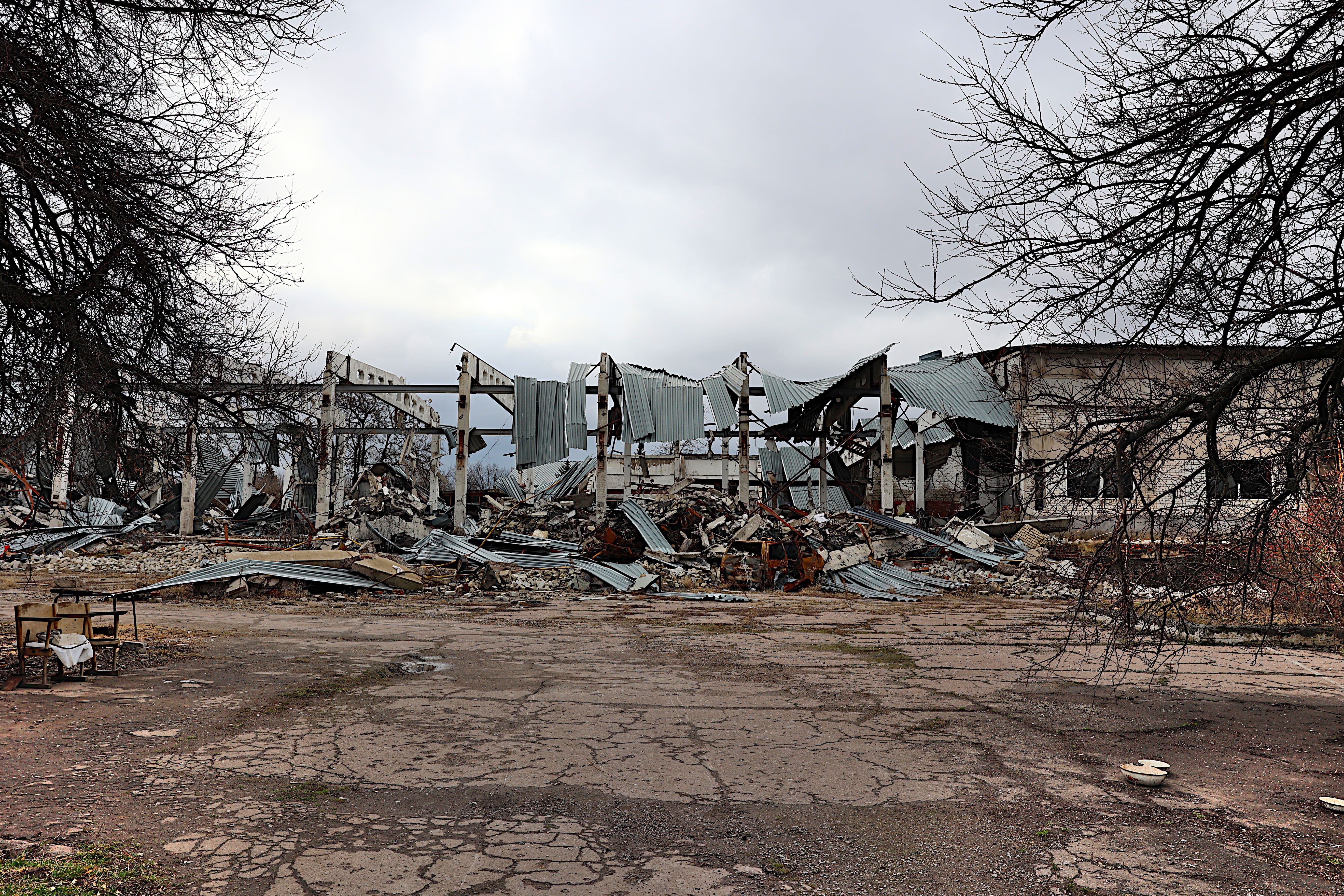 A local business's premises was severely damaged by Russian strikes months ago and repair is impossible due to lack of funds and continuing Russian shelling, local residents in the Donbas village Mykolaivka told a Kyiv Post reporter on Mar. 12. Photo by Phillip Ittner.
A local business's premises was severely damaged by Russian strikes months ago and repair is impossible due to lack of funds and continuing Russian shelling, local residents in the Donbas village Mykolaivka told a Kyiv Post reporter on Mar. 12. Photo by Phillip Ittner.
Soldiers new to units have adequate training but nothing can fully prepare a person for combat, and replacements learning to fight suffer excess casualties before they learn how to fight effectively, two sergeants explained. One soldier, by his account a seven-year veteran in the AFU, said that in his unit – an elite regular army assault infantry brigade that started the war as a volunteer territorial defense battalion – seasoned sergeants and enlisted men push new arrivals through in-house training prior to putting them in combat, but the practice is not uniform across the AFU.
Eighty-three-year-old Chasiv Yar resident Volodymyr (interviewees did not want to have their last names published), told Kyiv Post the town is strongly held by the Ukrainian military but there is no central water supply, no heating and no gas for months. Electricity supply has “surprisingly” been stable throughout the war, but, in recent weeks his home has seen cut-offs, he said. Volunteers help people still in the village with food and medicine deliveries, without which, he said, survival would be “impossible” Volodymyr said. Russian troops will never advance to Chasiv Yar because the AFU will stop them in Bakhmut “like they have for the last six months.”
Yaroslav, a volunteer driving to Donbas localities since the start of the war to help locals under attack by Russian forces to evacuate, told Kyiv Post “no one knows” how many civilians are left in Chasiv Yar, but intensifying Russian artillery fire hitting around the village have triggered a new exodus. Kyiv Post observed shell and mortar damage to most civilian buildings, particularly damaged windows. Some courtyards were cratered by recent howitzer shell strikes.
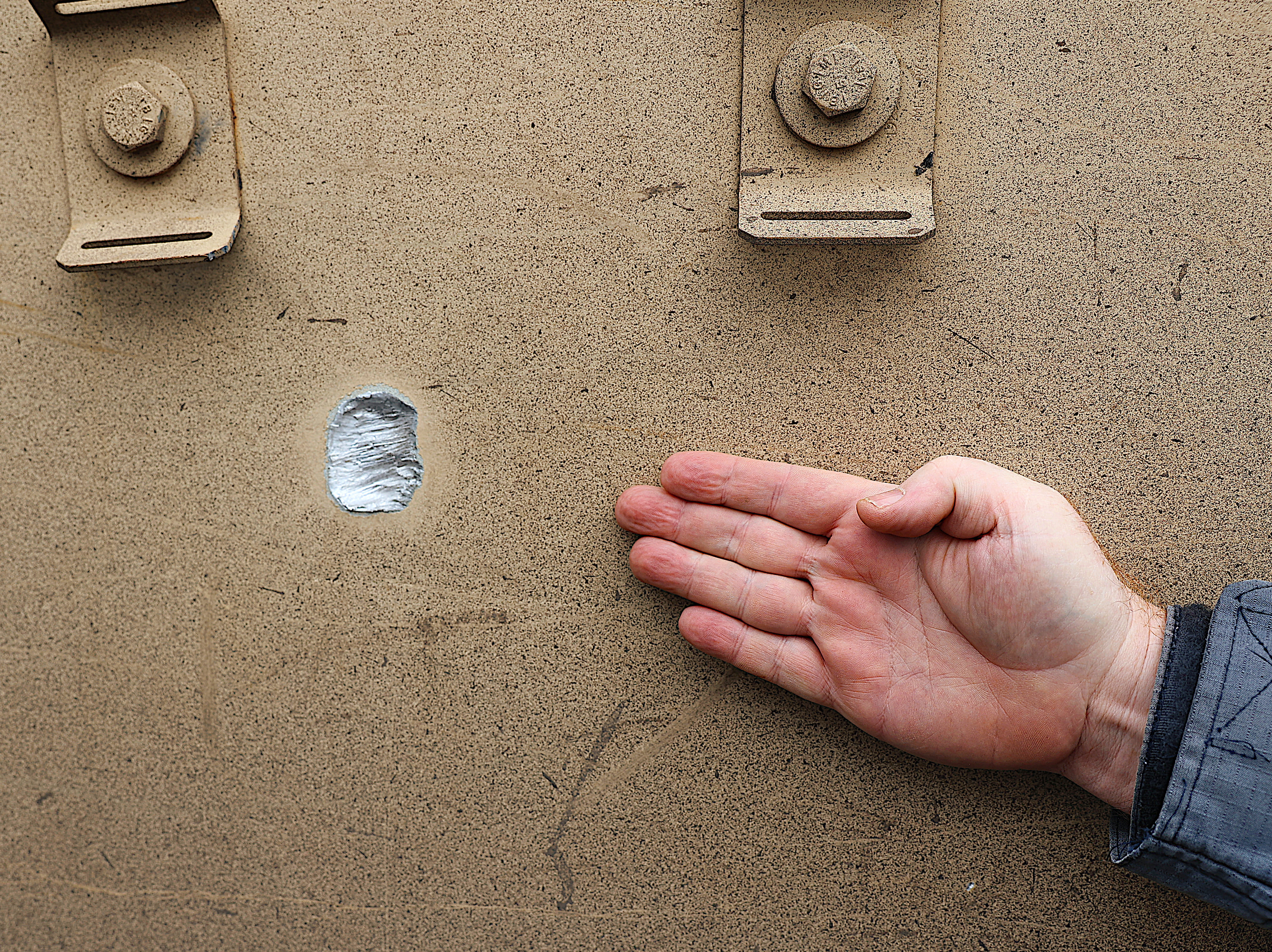 Kyiv Post reporter points to shell fragment damage in an M-113 US-made armor personnel carrier operating by Ukrainian troops in the Bakhmut sector. The vehicle's commander, a sergeant, said the M-113 is a reliable battle taxi but it would be better if it had a more powerful weapon than a machine gun. Mar. 11 photo by Phillip Ittner.
Kyiv Post reporter points to shell fragment damage in an M-113 US-made armor personnel carrier operating by Ukrainian troops in the Bakhmut sector. The vehicle's commander, a sergeant, said the M-113 is a reliable battle taxi but it would be better if it had a more powerful weapon than a machine gun. Mar. 11 photo by Phillip Ittner.
Liliya, a resident of Rai-Oleksandrivka, a village about 15 kilometers from front lines, told Kyiv Post “It’s become impossible to live here. The conditions are unendurable. There is firing and shelling all the time.” Her village has stable electricity, water drawn from wells, and homes are heated with wood or coal, she said. She is sure RF troops will never reach Rai-Oleksandrivka because the UAF will stop them, but over time RF shelling will demolish homes and farms in the region, she said. She praised AFU soldiers for their high discipline and for the food and fuel assistance they gave her.
“Our boys will fight forever, they will never stop,” she said. “But the death and destruction is terrible.”
You can also highlight the text and press Ctrl + Enter


